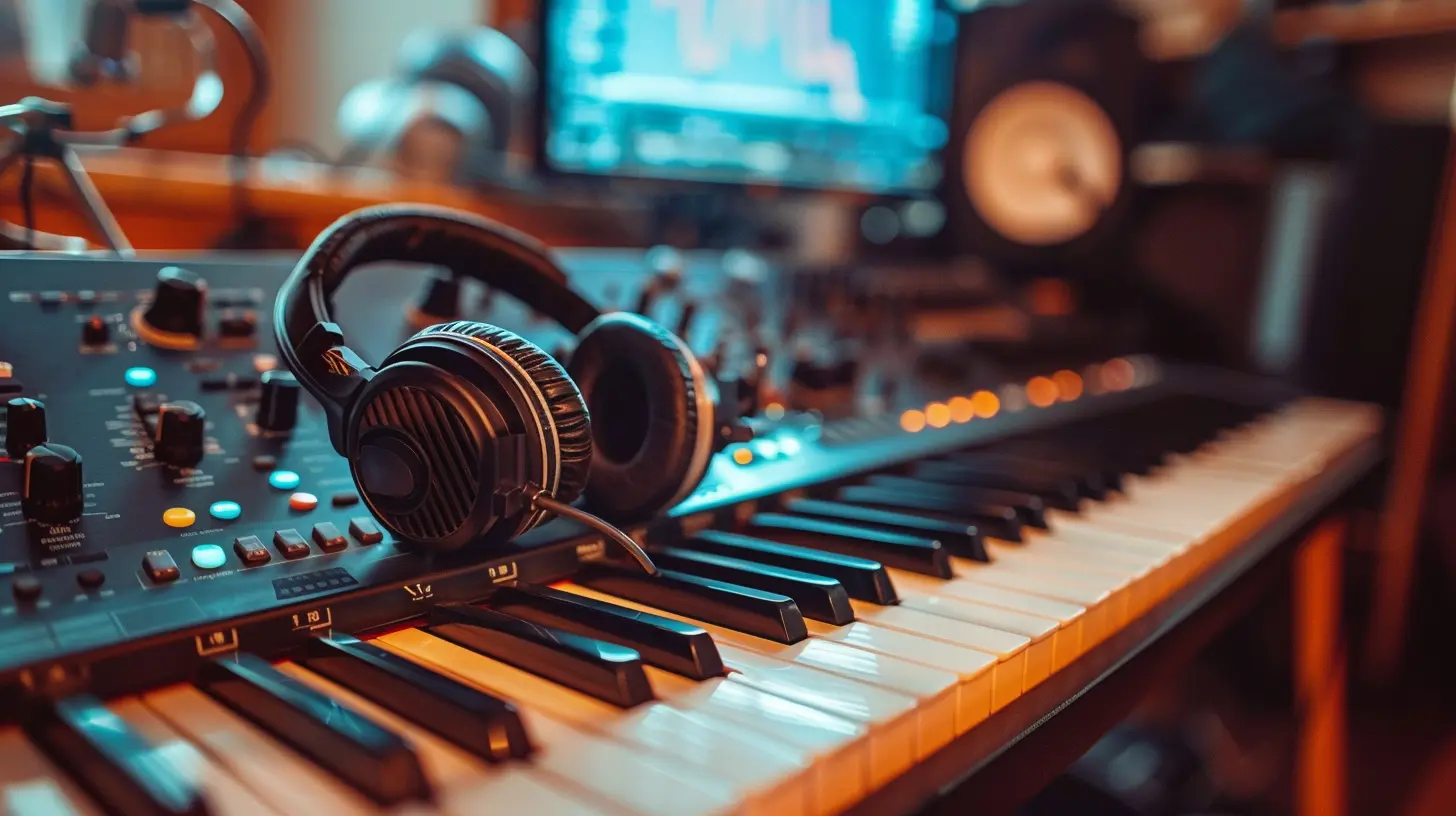How to Use Music and Sound to Deepen Your Game's World
29 August 2025
When it comes to video game design, everyone talks about visuals, storytelling, or gameplay mechanics. You know, the "big three." But honestly, do you know what's massively underrated? Audio! Music and sound design have this insane power to immerse players in a way that visuals alone can't. If you're building a game and sleeping on crafting the perfect soundscape, you're leaving so much potential on the table.
Think about it. Would The Legend of Zelda be as iconic without that triumphant overworld theme? Or how about the terrifying silence before a jump scare in Resident Evil? Music and sound don’t just set the mood—they tell stories, build tension, and even manipulate player emotions like a Jedi mind trick.
Ready to take your game's world from good to unforgettable? Let’s break down exactly how to use music and sound to their fullest potential for world-building. 
Why Music and Sound Are Essential to World-Building
Alright, let’s start here. Why the heck do music and sound matter so much in games, anyway? Think about real life. When you're walking down a busy street, you hear honking cars, chattering people, maybe the distant hum of a street performer’s guitar. Every sound paints a picture of the world around you.Your game needs those same layers of sound. Without them, it feels flat and empty, like watching a silent film in 2023. Music and sound breathe life into your game’s world—turning it from just a backdrop to something players feel deeply connected to. 
Music Sets the Emotional Tone
Ever notice how certain songs can give you goosebumps? Or how a sad melody can make you tear up even if you don’t know what it’s about? That’s the emotional superpower of music—and in games, it’s your secret weapon to hook players emotionally.1. Tailor the Mood to the Scene
A sweeping orchestral track feels majestic and inspiring, perfect for epic battles or heartfelt story moments. But throw in a slow, eerie piano piece, and suddenly the same scene is unsettling. Music changes how players feel, even without them realizing it.For instance, games like The Last of Us use minimalist guitar melodies to amplify the loneliness of a post-apocalyptic world. Simple, raw, and so effective.
2. Dynamic Music = Immersive Gameplay
Don’t just slap a looped track over your gameplay and call it a day. Modern players notice that lazy stuff. Instead, create adaptive soundtracks. You know, music that changes based on the player's actions.Take DOOM (2016) as an example. When you’re ripping through demons, the soundtrack is this hardcore metal chaos. But if you stop moving, it suddenly tones down. That shift keeps the adrenaline pumping. Dynamic music tricks your brain into feeling like you're controlling the mood—not just the game. 
Sound Effects: The Unsung Hero
Let’s talk about sound effects. They might not get the same spotlight as music, but man, they’re just as important. These little audio details are like the secret sauce of sound design. Without them, everything feels... off.1. Make the World Feel Alive
Imagine running through a forest in your game. What do you hear? Probably birds chirping, rustling leaves, maybe the crunch of twigs underfoot. Those sounds make the environment feel real.On the flip side, if all you hear is silence, players will feel like they’re in a lifeless void. That’s bad—like “rage quit and uninstall your game” bad.
If you’re building a sci-fi world, include the hum of alien machinery or the sterile beep of high-tech gadgets. Every setting has its own sound signature—make sure yours matches the vibe.
2. Feedback Through Sound
Players rely on audio cues to know what’s happening. Land a critical hit? Boom! Big, satisfying crunch. Get hit by an enemy? Cue the sharp, painful grunt. These sound effects act as feedback loops, letting players know they’re doing something right (or wrong).Even small things, like the satisfying ka-ching when collecting coins in Mario, are ridiculously important. They give players that dopamine hit that keeps them playing. 
Silence Is (Sometimes) Golden
Wait, silence? Yep. Sometimes the most effective sound is no sound at all.Silence creates contrast. You ever sit in a super quiet room and suddenly hear every little creak or shuffle? That’s exactly why silence in games can be terrifying. It makes the eventual sound (a creaking door, a sudden scream) hit harder.
Take Amnesia: The Dark Descent. Half the time, the lack of sound is what makes the atmosphere so suffocatingly tense. Silence is like the calm before a storm—it builds anticipation, leaving players on edge.
Crafting a Killer Soundtrack
Creating a memorable soundtrack doesn’t mean hiring a full orchestra and blowing your entire budget. You’ve got plenty of options, from hiring freelance composers to licensing royalty-free tracks. The key is making sure the music aligns with both your game’s tone and gameplay.1. Define Your Game’s Identity
Before diving into music, ask yourself: What’s the heart of my game? Is it whimsical, dark, action-packed, or chill? Your soundtrack should be a reflection of that identity.For instance, Stardew Valley is all about cozy, low-pressure farming life—and its music nails that vibe with relaxing, melodic tracks. Meanwhile, something like Dark Souls thrives on a haunting, oppressive soundtrack to amplify its brutal difficulty.
2. Experiment With Genres
Don’t feel boxed into orchestral music just because it’s the “safe” choice. Experiment with genres! If your game is set in a neon-lit cyberpunk city, lean into synthwave like Cyberpunk 2077. If it’s a fantasy RPG, try adding folk instruments for authenticity.The goal is to make your soundtrack memorable. Something players will hum long after they’ve put the controller down.
Tools and Tips for Game Audio Design
Luckily, you don’t need to be an audio wizard to nail great sound design. Tons of tools and resources are out there to help, even if you’re just starting out.1. Software for Beginners
- FMOD Studio: Perfect for adding dynamic, interactive audio to your game.- Audacity: A free, open-source audio editing tool for basic sound editing tasks.
- Wwise: Another great tool for integrating complex audio systems into your game engine.
These tools make it easier to implement adaptive soundscapes and high-quality effects without spending years learning audio engineering.
2. Lean Into Collaboration
If audio isn’t your forte, don’t be afraid to hire professionals. Websites like Fiverr, Upwork, or even Reddit’s game dev communities are loaded with talented composers and sound designers.Think of them as your co-pilot. You provide the vision, and they’ll handle the technical magic.
Avoid These Common Pitfalls
1. Generic, Forgettable Music
If your soundtrack sounds like elevator music, players will tune it out—and that’s a wasted opportunity! Invest time in creating something distinctive.2. Overloading the Player’s Ears
Too much sound can be overwhelming. Don’t layer dozens of effects and musical tracks at once—it just becomes noise. Balance is key.3. Neglecting Accessibility
Some players rely on subtitles or volume controls because of hearing impairments. Always provide customizable audio settings to cater to everyone.Wrapping It Up
Music and sound aren’t just afterthoughts in game design—they’re the heartbeat of your world. They tell stories, evoke emotions, and pull players deeper into the experience. Whether it’s the subtle chirp of crickets on a quiet evening or an epic orchestra booming during a boss fight, every sound matters.So, if you want your game to be unforgettable, don’t just focus on what players see or do. Focus on what they hear. You’d be amazed at how much a killer soundtrack and clever sound design can elevate your world-building from “meh” to masterpiece.
all images in this post were generated using AI tools
Category:
World BuildingAuthor:

Audrey McGhee
Discussion
rate this article
2 comments
Daphne Stewart
Great insights on integrating music and sound! Elevating atmosphere through audio truly enhances player immersion and emotional connection to the game.
November 24, 2025 at 5:03 PM

Audrey McGhee
Thank you! I'm glad you found the insights valuable. Music and sound play a crucial role in enhancing player experience!
Thomas McFee
This article beautifully highlights the transformative power of sound in gaming. Music not only enhances immersion but also deepens emotional connections. I appreciate the insights shared and look forward to applying these techniques to my own projects.
September 2, 2025 at 4:26 AM

Audrey McGhee
Thank you for your thoughtful comment! I'm glad you found the insights valuable and I can't wait to see how you apply them to your projects!


